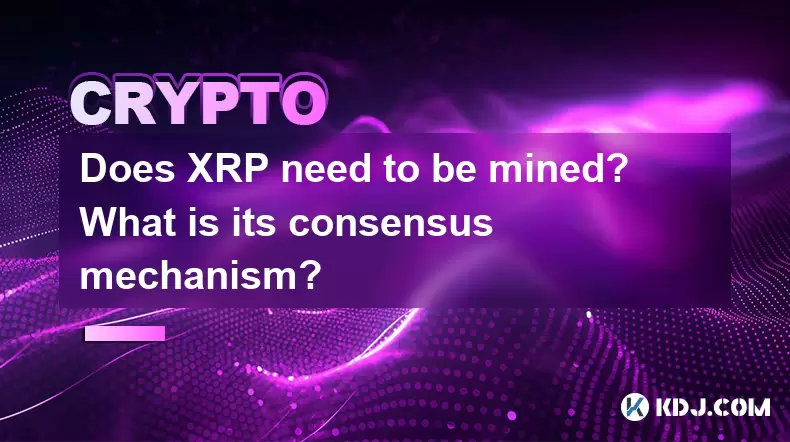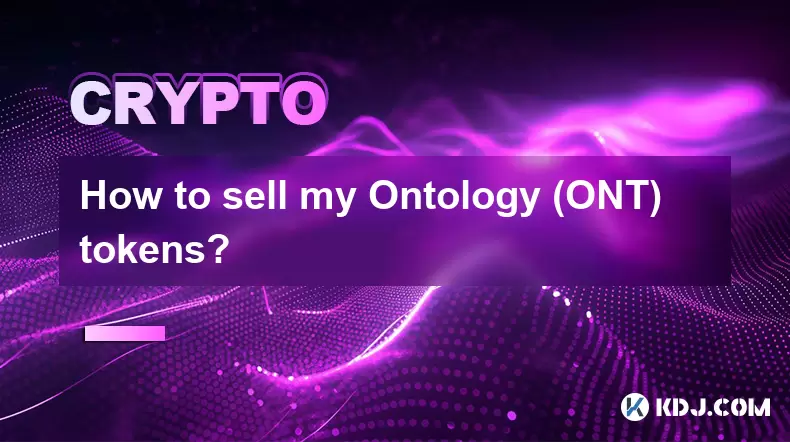-
 Bitcoin
Bitcoin $116900
0.00% -
 Ethereum
Ethereum $4280
5.48% -
 XRP
XRP $3.265
-1.45% -
 Tether USDt
Tether USDt $1.000
-0.01% -
 BNB
BNB $807.0
1.41% -
 Solana
Solana $183.1
2.93% -
 USDC
USDC $0.9999
0.00% -
 Dogecoin
Dogecoin $0.2440
6.50% -
 TRON
TRON $0.3357
-0.88% -
 Cardano
Cardano $0.8178
2.63% -
 Hyperliquid
Hyperliquid $44.13
7.45% -
 Chainlink
Chainlink $21.39
9.09% -
 Stellar
Stellar $0.4524
-0.84% -
 Sui
Sui $3.957
2.13% -
 Bitcoin Cash
Bitcoin Cash $572.7
-2.54% -
 Hedera
Hedera $0.2671
1.54% -
 Avalanche
Avalanche $24.77
4.17% -
 Ethena USDe
Ethena USDe $1.001
0.02% -
 Litecoin
Litecoin $122.3
-1.94% -
 Toncoin
Toncoin $3.432
2.26% -
 UNUS SED LEO
UNUS SED LEO $9.007
0.49% -
 Shiba Inu
Shiba Inu $0.00001396
5.26% -
 Uniswap
Uniswap $11.09
1.64% -
 Polkadot
Polkadot $4.155
4.57% -
 Dai
Dai $1.000
0.00% -
 Pepe
Pepe $0.00001253
5.11% -
 Cronos
Cronos $0.1588
2.67% -
 Bitget Token
Bitget Token $4.512
0.05% -
 Monero
Monero $275.0
0.64% -
 Ethena
Ethena $0.7527
15.10%
Does XRP need to be mined? What is its consensus mechanism?
XRP doesn't require mining; it uses the Ripple Protocol Consensus Algorithm (RPCA) for validation, making it more energy-efficient and faster than PoW-based cryptocurrencies.
May 11, 2025 at 06:56 pm

Does XRP need to be mined? What is its consensus mechanism?
When exploring the world of cryptocurrencies, it's crucial to understand the unique characteristics and mechanisms behind each digital asset. XRP, the native cryptocurrency of the Ripple network, stands out due to its approach to validation and distribution. Unlike many other cryptocurrencies, XRP does not require mining. This article will delve into why XRP doesn't need mining and explain its consensus mechanism, the Ripple Protocol consensus algorithm (RPCA).
Why XRP Doesn't Need Mining
The concept of mining is central to many cryptocurrencies, especially those that operate on proof-of-work (PoW) consensus mechanisms like Bitcoin. Mining involves solving complex mathematical problems to validate transactions and add them to the blockchain, rewarding miners with newly created cryptocurrency. However, XRP's design eliminates the need for mining.
XRP was pre-mined, meaning all 100 billion XRP tokens were created when the Ripple network was launched. This pre-mining approach was chosen to ensure the total supply of XRP is fixed and to distribute the tokens in a controlled manner. By pre-mining, Ripple aimed to avoid the energy-intensive and resource-heavy process of mining, making XRP more environmentally friendly and efficient.
The Ripple Protocol Consensus Algorithm (RPCA)
Instead of mining, XRP uses a unique consensus mechanism known as the Ripple Protocol Consensus Algorithm (RPCA). This mechanism is designed to achieve consensus among the nodes on the Ripple network without the need for mining. Let's explore how RPCA works and why it's effective.
RPCA operates through a process of continuous and iterative voting among trusted nodes, known as validators. These validators are responsible for verifying and agreeing on the state of the ledger. Unlike PoW, which requires significant computational power, RPCA relies on a majority agreement among validators to confirm transactions and update the ledger.
How RPCA Works
The process of achieving consensus through RPCA involves several key steps. Here's a detailed look at how it works:
- Transaction Proposal: A node on the Ripple network proposes a set of transactions to be included in the next ledger version.
- Voting: Validators on the network vote on the proposed transactions. Each validator checks the validity of the transactions and votes on whether to include them in the ledger.
- Consensus Round: If a supermajority (typically 80%) of validators agree on a set of transactions, those transactions are considered validated and are added to the ledger.
- Ledger Update: Once consensus is reached, the ledger is updated to reflect the validated transactions, and the process starts again for the next set of transactions.
This iterative process ensures that the Ripple network can quickly and efficiently validate transactions, often achieving consensus in a matter of seconds. This speed and efficiency are significant advantages over traditional PoW systems.
Advantages of RPCA Over Traditional Mining
The use of RPCA instead of traditional mining offers several advantages for XRP and the Ripple network:
- Energy Efficiency: Without the need for mining, XRP transactions consume significantly less energy compared to PoW-based cryptocurrencies.
- Scalability: The consensus mechanism allows for faster transaction processing and higher throughput, making it suitable for large-scale financial applications.
- Security: By relying on a network of trusted validators, RPCA can achieve a high level of security without the vulnerabilities associated with mining pools and 51% attacks.
The Role of Validators in RPCA
Validators play a crucial role in the operation of the Ripple network and the RPCA consensus mechanism. Validators are entities that run software to participate in the consensus process. They can be operated by Ripple, financial institutions, or other trusted parties.
To become a validator, one must:
- Set up and maintain a server: Running the Ripple software to participate in the consensus process.
- Be listed on the Unique Node List (UNL): The UNL is a list of trusted validators used by nodes on the network to determine which validators to trust for consensus.
- Participate in consensus rounds: Validators must actively vote on proposed transactions to help achieve consensus.
The trust and reputation of validators are critical to the stability and security of the Ripple network. By relying on a network of trusted validators, RPCA ensures that the consensus process is both efficient and secure.
XRP's Unique Distribution Model
Given that XRP was pre-mined, it's important to understand how the tokens are distributed. Ripple Labs, the company behind XRP, has implemented a structured distribution model to ensure the gradual release of XRP into the market.
- Escrow Accounts: Ripple has placed a significant portion of the total XRP supply in escrow accounts. These accounts release a fixed amount of XRP monthly to control the supply and mitigate market volatility.
- Direct Sales: Ripple sells XRP directly to institutional investors and financial institutions, often through over-the-counter (OTC) transactions.
- Programmatic Sales: XRP is also sold programmatically through trading platforms, allowing for more widespread distribution.
This distribution model helps maintain stability in the XRP market and ensures that the cryptocurrency remains accessible to a broad range of users and institutions.
Frequently Asked Questions
Q: Can anyone become a validator on the Ripple network?
A: Yes, anyone can set up a validator on the Ripple network, but to be effective, they must be trusted by other nodes and included on the Unique Node List (UNL). This requires a good reputation and often involves being recognized by Ripple or other major participants in the network.
Q: How does the pre-mining of XRP affect its value?
A: The pre-mining of XRP means that the total supply is fixed and known, which can provide a level of predictability and stability. However, it also means that the distribution of XRP is controlled by Ripple Labs, which can influence its value based on their release schedule and market strategies.
Q: Is XRP more environmentally friendly than other cryptocurrencies?
A: Yes, XRP is considered more environmentally friendly than cryptocurrencies that use proof-of-work consensus mechanisms. By not requiring mining, XRP transactions consume significantly less energy, making it a more sustainable option in the crypto ecosystem.
Q: How does the speed of XRP transactions compare to other cryptocurrencies?
A: XRP transactions are typically faster than those on many other cryptocurrencies, often achieving consensus in seconds. This speed is due to the efficient Ripple Protocol Consensus Algorithm, making XRP suitable for real-time financial applications.
Disclaimer:info@kdj.com
The information provided is not trading advice. kdj.com does not assume any responsibility for any investments made based on the information provided in this article. Cryptocurrencies are highly volatile and it is highly recommended that you invest with caution after thorough research!
If you believe that the content used on this website infringes your copyright, please contact us immediately (info@kdj.com) and we will delete it promptly.
- Trump, Nasdaq, and Token Treasury: WLFI's $1.5B Gambit
- 2025-08-10 06:50:12
- Trump, Nasdaq, and Token Treasury: WLFI's $1.5B Play
- 2025-08-10 06:30:11
- Coinbase, DEX Trading, and Base Network: A New Era for Crypto?
- 2025-08-10 06:30:11
- Block Inc., Bitcoin, and Mining Chips: Reshaping Digital Finance, New York Style
- 2025-08-10 06:50:12
- Stablecoin Surge Ignites Altcoin Investment Hunt: What's Hot Now?
- 2025-08-10 06:55:16
- Penny Crypto Dreams: Can XRP Reach $10,000? A Look at LILPEPE and the Meme Coin Mania
- 2025-08-10 04:50:11
Related knowledge

How to purchase Aragon (ANT)?
Aug 09,2025 at 11:56pm
Understanding Aragon (ANT) and Its PurposeAragon (ANT) is a decentralized governance token that powers the Aragon Network, a platform built on the Eth...

Where can I buy UMA (UMA)?
Aug 07,2025 at 06:42pm
Understanding UMA and Its Role in Decentralized FinanceUMA (Universal Market Access) is an Ethereum-based decentralized finance (DeFi) protocol design...

How to buy Storj (STORJ) tokens?
Aug 09,2025 at 07:28am
Understanding Storj (STORJ) and Its Role in Decentralized StorageStorj is a decentralized cloud storage platform that leverages blockchain technology ...

What is the best app to buy Nano (NANO)?
Aug 09,2025 at 03:35am
Understanding Nano (NANO) and Its Unique FeaturesNano is a feeless, instant cryptocurrency designed for fast peer-to-peer transactions. Unlike many ot...

Where can I purchase Siacoin (SC)?
Aug 08,2025 at 11:14am
Understanding Siacoin (SC) and Its Role in the Sia NetworkSiacoin (SC) is the native cryptocurrency of the Sia decentralized cloud storage platform, a...

How to sell my Ontology (ONT) tokens?
Aug 09,2025 at 06:08pm
Understanding Ontology (ONT) and Its Trading EcosystemBefore selling your Ontology (ONT) tokens, it's essential to understand the nature of the crypto...

How to purchase Aragon (ANT)?
Aug 09,2025 at 11:56pm
Understanding Aragon (ANT) and Its PurposeAragon (ANT) is a decentralized governance token that powers the Aragon Network, a platform built on the Eth...

Where can I buy UMA (UMA)?
Aug 07,2025 at 06:42pm
Understanding UMA and Its Role in Decentralized FinanceUMA (Universal Market Access) is an Ethereum-based decentralized finance (DeFi) protocol design...

How to buy Storj (STORJ) tokens?
Aug 09,2025 at 07:28am
Understanding Storj (STORJ) and Its Role in Decentralized StorageStorj is a decentralized cloud storage platform that leverages blockchain technology ...

What is the best app to buy Nano (NANO)?
Aug 09,2025 at 03:35am
Understanding Nano (NANO) and Its Unique FeaturesNano is a feeless, instant cryptocurrency designed for fast peer-to-peer transactions. Unlike many ot...

Where can I purchase Siacoin (SC)?
Aug 08,2025 at 11:14am
Understanding Siacoin (SC) and Its Role in the Sia NetworkSiacoin (SC) is the native cryptocurrency of the Sia decentralized cloud storage platform, a...

How to sell my Ontology (ONT) tokens?
Aug 09,2025 at 06:08pm
Understanding Ontology (ONT) and Its Trading EcosystemBefore selling your Ontology (ONT) tokens, it's essential to understand the nature of the crypto...
See all articles

























































































